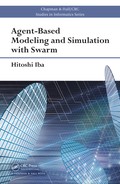Introduction 11
1. I was ordering lunch at a restaurant.
2. The waitress told me that there was a fish pla te and a meat plate, and
I ordered the fish plate.
3. The waitress returned a few minutes later and told me that I could also
choose pasta.
4. I then ordered the meat plate.
Such a situation actually happened: once, in figure s kating where judges score,
the existence of a skater who came in fourth place caused the o rder of the first
and second place skaters to be reversed [97].
A more classic example that questions whether democracy is fair is Con-
dorcet’s paradox. Condorce t was a mathematician, philosopher, and politician
in 18th century France, and is known for investigating the paradox of voting.
This paradox appears when voting for three c andidates, X, Y, and Z. The
result of voting by 60 people was as follows.
• 23 votes for X
• 19 votes for Y
• 18 votes for Z
The question is, should we choose X?
Condorcet clarified that the following paradox exists.
If:
• Z > Y in all 23 people who voted for X
• Z > X in all 19 people who voted for Y
• Y > X in two people, and X > Y in 16 people in a total of 18 people
who voted for Z
Then:
• X to Y is 25 to 35, and X to Z is 23 to 37 → X: 0 wins, 2 losses
• Y to X is 35 to 25, and Y to Z is 19 to 41 → Y: 1 win, 1 loss
• Z to X is 37 to 23, and Z to Y is 41 to 19 → Z: 2 wins, 0 losses
Therefore, Z > Y > X, which is the opposite of the vote.
On the other hand, if
• Y > Z in all 23 people who voted for X
• Z > X in 17 people, and X > Z in two people in a total of 19 people
who voted for Z
12 Agent-Based Modeling and Simulation with Swarm
• Y > X in 10 peo ple, and X > Y in eight people in a total of 18 people
who voted for Z
Then:
• X to Y is 33 to 27, and X to Z is 25 to 35 → X: 1 win, 1 loss
• Y to X is 27 to 33, and Y to Z is 42 to 18 → Y: 1 win, 1 loss
• Z to X is 35 to 25, and Z to Y is 18 to 42 → Z: 1 win, 1 loss
Therefore, X, Y, and Z become even.
In this way, Arrow proved that the majority vote, which is the funda-
mental principle in democracy, can be manipulated in an ar bitrary manner.
For this a chievement Arrow received the 4 th Nobel Prize in Economics in
1972. The above phenomenon, w hich appears to undermine the f oundations
of democracy, can be viewed as the emergence of irrationality in a society con-
sisting of multiple agents. Specifically, although the actions of each individual
are rational, this might not necess arily maximize the benefit for society as a
whole.
While residing in the United States in 1997, the author had the opportunity
to visit the Santa Fe Institute, which left the impression of an extremely
open and intellectual environment. During the visit, the au thor was convinced
that innovative research was literally “emerging” from the institute. A notable
example of this was the research of Brian Arthur, who prop osed the concept
of “ increased returns,” which revolutionized the fundamentals of economics.
Brian Arthur co nsidered economics as a complex system driven by interac-
tion between multiple agents. In conventional economics, common knowledge
has dictated that an overall equilibrium ex ists between supply and demand
guided by “the invisible ha nd,” the result of which is that the economy is sta-
ble. However, recent trends in financing a nd stock prices have demonstrated
that this assumption is invalid. There are cases where no equilibrium points
exist, and the economy as a whole can start to shift in a certain direction as a
result of changes in an associated factor. Nothing is capable of stopping this
shift once it commences (this process is known as “the bandwagon effect” [59,
ch. 2]). A well-known example was compe tition between videotape standards
(Video Ho me System (VHS) versus Betamax). Although the Betamax format
was superior in terms of functionality, VHS eventually prevailed. Thus, if one
of two products is considered s uperior in the spur of the moment, the revenue
can start to snowball, even if the actual superiority of the chosen product is
unclear.
Hence, a number of complex and unpredictable emergent proper ties exist
in a society c onstituting an as sembly of agents. The mechanisms by which the
various phenomena emerge in such complex systems are explained in this book.
The next cha pter presents an exposition of evo lutionary methods, important
fundamental techniques (simulation tools) that are use d for these ex planatory
purposes.
..................Content has been hidden....................
You can't read the all page of ebook, please click here login for view all page.
